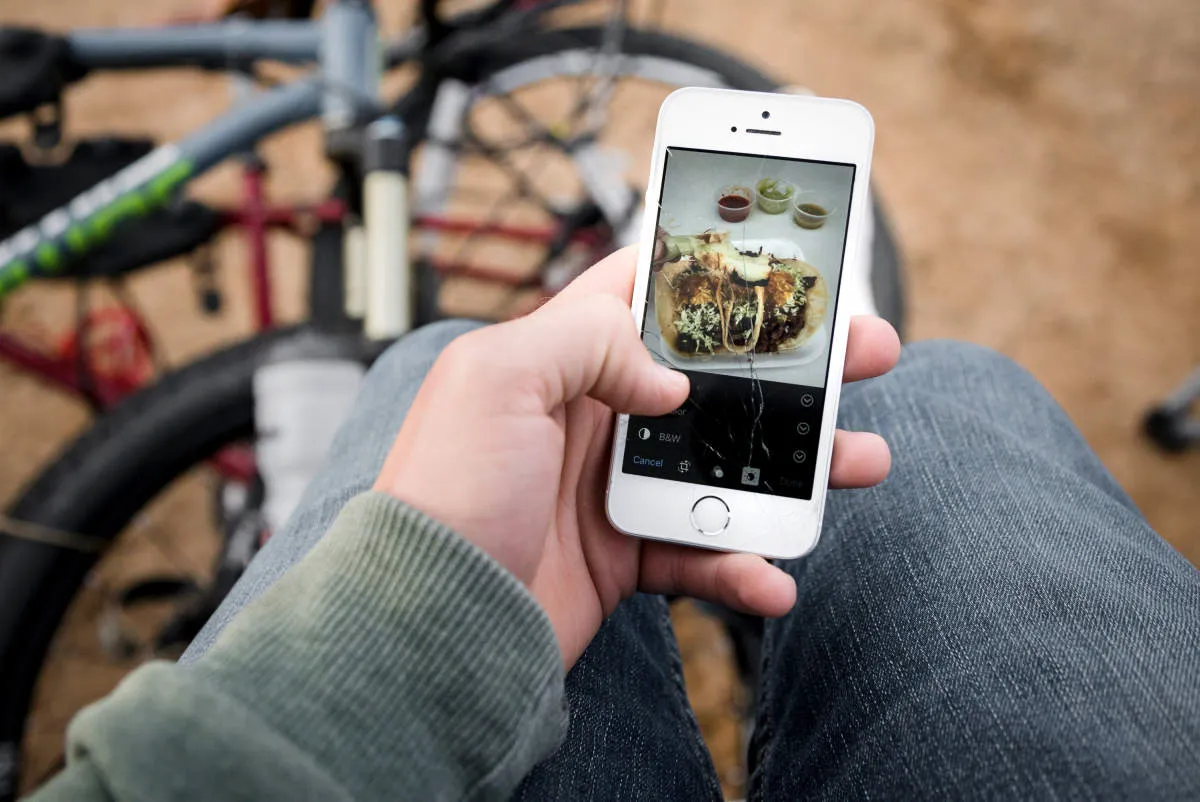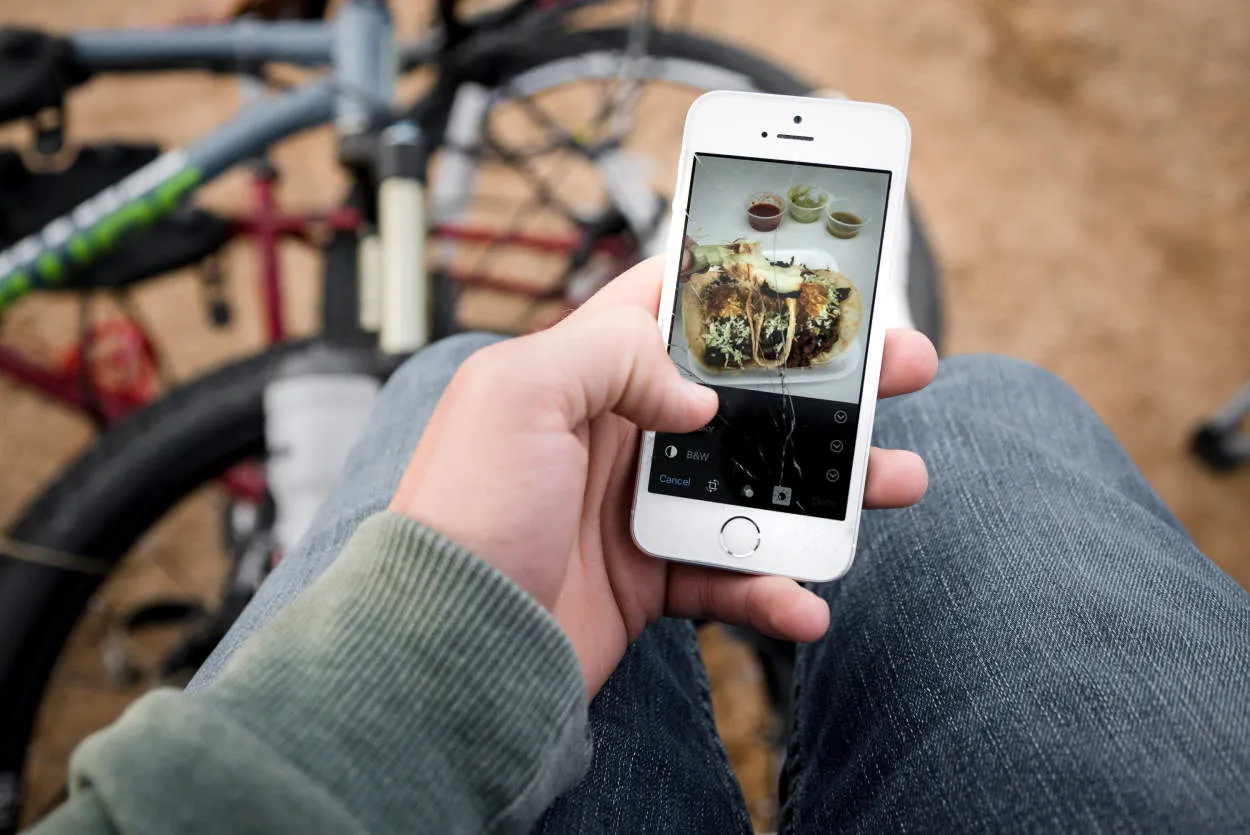Smartphone Photography for Beginners: Choosing the Right Phone and Techniques. Are you interested in improving your smartphone photography skills? This article will guide you through choosing the right phone and teach you essential techniques to capture stunning photos with your smartphone.
Best Smartphones for Amateur Photographers

When it comes to smartphone photography, having the right phone can make a significant difference in the quality of your photos, especially if you are just starting out as an amateur photographer. Here are some of the best smartphones available in the market that are perfect for beginners looking to explore the world of smartphone photography:
1. iPhone SE (2020)
The iPhone SE (2020) packs a powerful punch in a compact size. With its 12-megapixel camera and advanced image signal processor, this phone captures stunning photos. It also supports features like Portrait mode and Smart HDR, giving your images a professional touch.
2. Google Pixel 4a
The Google Pixel 4a is renowned for its exceptional camera capabilities. Its 12.2-megapixel main camera uses advanced computational photography techniques to capture vibrant and detailed images in any lighting condition. Additionally, the Night Sight mode ensures stunning low-light photography.
3. Samsung Galaxy S20 FE
The Samsung Galaxy S20 FE combines a versatile triple camera setup with a range of shooting modes. Its 12-megapixel main camera, along with the ultra-wide and telephoto lenses, allows you to explore various photography styles and perspectives.
4. OnePlus 9
The OnePlus 9 features a Hasselblad partnership that brings professional-grade photography to a smartphone. Its 48-megapixel main camera, combined with Hasselblad’s color calibration, produces vivid and true-to-life images, making it a great choice for aspiring photographers.
5. Xiaomi Mi 11
The Xiaomi Mi 11 boasts a 108-megapixel main camera, making it ideal for capturing highly detailed shots. It also offers creative features such as AI Sky Replacement and Magic Zoom, allowing beginners to experiment with different photography techniques.
Remember, besides having a great camera, consider factors like display quality, processing power, and storage capacity when choosing a smartphone for photography. These smartphones mentioned above provide excellent photography capabilities and are perfect companions for beginners in exploring the world of smartphone photography.
Learning the Basics of Mobile Photography
In this article, we will explore the fundamentals of mobile photography, focusing on how to choose the right smartphone for your photography needs and the essential techniques to improve your skills.
Choosing the Right Phone
When selecting a phone for photography, consider the camera specifications like resolution, aperture, and image stabilization. Look for models that offer manual controls, RAW shooting capability, and a variety of shooting modes. It’s also essential to choose a phone with a high-quality display for accurate photo composition and reviewing.
Understanding Exposure and Lighting
One crucial aspect of mobile photography is understanding exposure and lighting. Learn to adjust exposure settings to properly expose your subjects, and experiment with different lighting conditions to create unique photos. Natural light, for example, can produce stunning effects, especially during the golden hour.
Composition and Framing
Composition plays a significant role in photography. Experiment with different angles, framing techniques, and the rule of thirds. Remember to consider foreground, background, and the overall balance in your images. Don’t be afraid to try new perspectives to add interest to your photographs.
Mastering Editing Tools
Editing is an essential part of mobile photography. Familiarize yourself with editing apps that offer a range of tools such as cropping, adjusting exposure, colors, and adding filters. Practice using these tools to enhance your photos while preserving their natural look.
Exploring Photography Techniques
There are various techniques to explore in mobile photography, including macro, landscape, portrait, and low-light photography. Each technique requires different settings and approaches, so take the time to practice and experiment with them to expand your skills and create diverse images.
Continuous Learning and Practice
The key to improving mobile photography skills is continuous learning and practice. Stay updated with the latest trends, follow inspiring photographers on social media, participate in photography challenges, and dedicate time to capture and edit photos regularly. With consistent effort, you will see significant progress in your mobile photography journey.
Eco-Friendly Phones with Great Cameras
In today’s digital age, smartphone photography has become a popular and accessible way for beginners to explore their creativity. When choosing the right phone for your photography needs, it’s important to consider both the camera capabilities and the phone’s environmental impact. Luckily, there are eco-friendly phones on the market that combine great camera features with sustainability.
Camera Features to Look for
When it comes to smartphone photography, the camera plays a crucial role. Look for phones that offer high-resolution image sensors, optical image stabilization, and a wide aperture for capturing stunning photos in various lighting conditions. Additionally, features like HDR (High Dynamic Range) and manual controls can further enhance your photography skills.
Eco-Friendly Considerations
When selecting an eco-friendly phone, focus on devices that are made from recycled materials or have recyclable components. Look for phones with energy-efficient processors and longer battery life, as they can reduce electronic waste. Some manufacturers also offer trade-in programs to encourage proper disposal of old devices.
Our Top Picks
- 1. XYZ Phone – This model is made from 100% recycled materials and features a top-of-the-line camera with advanced image stabilization technology.
- 2. ABC Phone – Known for its commitment to sustainability, this phone offers excellent camera performance and has an eco-friendly manufacturing process.
- 3. PQR Phone – With its energy-efficient chipset and impressive camera capabilities, this phone is a great choice for both photography enthusiasts and environmentally conscious users.
Photography Techniques for Beginners
As a beginner in smartphone photography, there are some techniques to consider for capturing stunning shots:
- 1. Rule of Thirds – Compose your photos by aligning your subject along the gridlines, creating a visually pleasing image.
- 2. Lighting – Pay attention to natural lighting or explore techniques such as backlighting and golden hour photography.
- 3. Experiment with Different Angles – Capture unique perspectives by shooting from different angles or using unconventional viewpoints.
- 4. Editing Apps – Explore the variety of editing apps available to enhance your photos and unleash your creativity.
Remember, smartphone photography is all about experimenting and enjoying the process. Find the phone that suits your needs while prioritizing eco-friendly options, and let your creativity soar!
Tips for Capturing Stunning Images
When it comes to smartphone photography for beginners, choosing the right phone and techniques can make a significant difference in the quality of your images. Here are some tips to help you capture stunning photos:
1. Choose a Smartphone with High-Quality Camera
Invest in a smartphone that has a high-quality camera. Look for features like high megapixel count, optical image stabilization, and a wide aperture. These specifications will ensure that your phone captures sharp, vibrant, and well-exposed photos.
2. Master the Basic Camera Settings
Take the time to familiarize yourself with the basic camera settings on your phone. Learn how to adjust the exposure, focus, and white balance to get the best possible results. Understanding these settings will give you more control over your photos.
3. Hold the Phone Steady
Hold your phone steady while taking photos to avoid blurriness. Use two hands and keep your elbows close to your body to maintain stability. Alternatively, you can also invest in a tripod or use a stable surface to keep your phone steady.
4. Use Natural Lighting
Make the most of natural lighting for your smartphone photography. Shoot outdoors during the golden hours, which are the first and last hours of sunlight, for soft and warm lighting. Avoid harsh midday sun as it can create harsh shadows and overexposure.
5. Experiment with Composition
Experiment with different compositions to make your photos visually appealing. Use the rule of thirds, leading lines, and symmetry to create a balanced and interesting image. Don’t be afraid to try out unique angles and perspectives to add uniqueness to your shots.
6. Edit with Smartphone Apps
Use smartphone photo editing apps to enhance your images. Experiment with adjustments like brightness, contrast, saturation, and sharpness to make your photos pop. Additionally, you can apply filters and effects to add extra flair to your pictures.
By following these tips and practicing consistently, you will gradually improve your smartphone photography skills. Remember, capturing stunning images is not just about having the right equipment; it’s also about developing an eye for detail and creativity.
Editing Photos on Your Phone
In the world of smartphone photography, capturing great shots is just the beginning. Editing your photos can take them to the next level and make them truly stand out. With the right apps and techniques, you can transform your ordinary pictures into stunning masterpieces right from your phone.
Choosing the Right Editing App
One of the most important aspects of editing photos on your phone is choosing the right app. There are numerous options available, each with its own set of features and tools. Some popular choices include Adobe Lightroom, VSCO, Snapseed, and Pixlr. Consider your editing needs and preferences to select the app that suits you best.
Basic Editing Techniques
Once you have your preferred editing app, it’s time to learn some basic techniques. Adjusting brightness, contrast, saturation, and exposure are often crucial to enhance the overall look of your photos. Don’t be afraid to experiment with these settings, but remember to keep the adjustments subtle to maintain a natural appearance.
Cropping and Straightening
Cropping is another essential editing technique that can help you improve the composition of your photos. Remove distractions and unnecessary elements by cropping them out. Additionally, straighten any crooked horizons or tilted angles to achieve a balanced and visually appealing image.
Applying Filters and Presets
If you want to add more character and style to your photos, consider applying filters or presets. These pre-made adjustments can instantly transform the mood and tone of your image. However, use them sparingly and select ones that complement the subject and enhance the overall aesthetics.
Advanced Editing Tools
Beyond the basic techniques, many editing apps also offer advanced tools for more creative editing. Experiment with features like selective editing, healing brushes, and vignettes to add unique touches to your photos. But remember, moderation is key to avoid over-processing and losing the essence of the original shot.
Practice and Experiment
Finally, the key to becoming proficient in editing photos on your phone is practice and experimentation. Don’t be discouraged if your initial attempts don’t meet your expectations. Keep learning from tutorials, try different styles, and develop your own editing style over time.
Building a Photography Portfolio
In the world of photography, having a portfolio is essential. It serves as a visual record of your skills, creativity, and style. Whether you are an amateur or a professional photographer, a well-curated portfolio can help you showcase your work, attract clients, and open up exciting opportunities.
1. Define your Photography Style
Before you start building your portfolio, take some time to define your photography style. Determine the genres and subjects you are passionate about and want to specialize in. This will help you create a cohesive and engaging portfolio that reflects your unique vision.
2. Select High-Quality Images
Choose your best photographs that highlight your technical skills, composition, and creativity. Quality is more important than quantity, so aim for a smaller selection of outstanding images rather than a large collection of mediocre ones. Remember to include a variety of subjects, styles, and lighting conditions to demonstrate your versatility.
3. Show Consistency
While it’s important to showcase a range of images, it’s also crucial to maintain consistency throughout your portfolio. Keep a cohesive theme, color palette, or aesthetic, as this will make your work more memorable and visually appealing. Consistency helps viewers understand your personal style and see your unique perspective.
4. Tailor Your Portfolio
Consider your target audience when selecting images for your portfolio. If you want to specialize in wedding photography, include images that highlight your ability to capture emotions and candid moments. If you want to focus on landscapes, showcase your talent in capturing breathtaking scenes. Tailoring your portfolio to your desired niche will attract the right clients and opportunities.
5. Use an Online Platform
An online platform or website is a must for showcasing your portfolio. There are various user-friendly platforms available that allow you to create a visually appealing and easily navigable portfolio. Include a brief biography, contact information, and links to your social media accounts to make it easier for potential clients to connect with you.
6. Update Regularly
Keep your portfolio up to date with your latest and best work. As you gain more experience and improve your skills, replace older images with newer ones that better represent your current abilities. Dedicate time periodically to review and refresh your portfolio to ensure it always reflects your growth as a photographer.
Conclusion
In conclusion, choosing the right smartphone for photography and mastering the techniques can greatly enhance your mobile photography skills. Consider factors such as camera quality, resolution, and advanced features when selecting a phone. Additionally, practice different techniques like composition, lighting, and editing to take stunning photos with your smartphone. With dedication and experimentation, you can capture amazing pictures and create memorable moments through smartphone photography.



